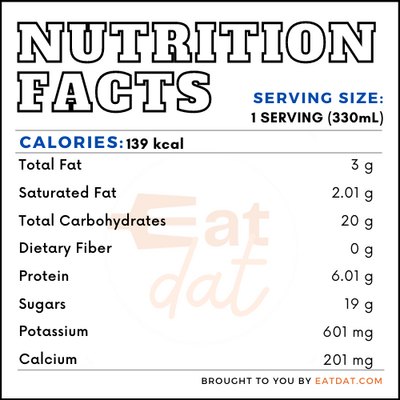
Latte
also known as Caffè latte
What is a Latte?
A latte is a beverage made with a single shot of espresso and steamed milk. The resulting drink doesn’t have much foam but is stronger than many other coffee drinks. The term latte comes from the Italian word for milk.
- This beverage can be served hot or cold and, in many cafés, it is served with art.
- This caffeinated beverage is one of the most popular drinks in coffee shops.
The top 7 flavors, according to Coffee Sesh are:
- Vanilla
- Caramel
- Mocha
- Pumpkin Spice
- Hazelnut
- Coconut
- Lavender
Origin of latte
Coffee drinking originated in the Middle East sometime in the 15th century and became very popular in Europe by the 19th century. In Europe, coffee has been drunk with milk since the 17th century. However, espresso had to be invented before the latte could be born. Brewing was a long and tiresome process and European inventors tried to find a way around it.
Many machines were invented, but the espresso machine we know today was first invented in Italy by Angelo Moriondo of Turin, Italy. He received the patent for it in 1884. Steam wands were later added to the machines in 1903. Milk coffee has been popular in Europe for at least a couple of centuries. Caffè lattes were invented for American tourists in Italy around 1867.
Commercial production
Most cafés use professional espresso machines to prepare this drink. To prepare this beverage, milk should first be steamed to create a smooth microfoam. Whole milk is best as the fat content helps make it very frothy. Then, espresso must be prepared with hot water and finely ground coffee beans. After, the espresso is poured into a glass or cup, and then the foamed milk is added in from above. A very small amount of milk froth will be left at the top. The same procedure can be followed at home, as well.
Nutrition
One serving (330mL) of caffe latte contains:

Lattes contain caffeine, which provides an instant buzz. High doses of caffeine, however, can lead to heart problems, as well as palpitations, high blood pressure, irregular heart rate, and heart attacks. However, research suggests that moderate doses of caffeine might be able to protect against mental illnesses such as dementia and Alzheimer’s. This hot beverage also contains high levels of antioxidants, which help prevent certain types of cancer and regulate insulin levels. The milk in this beverage is beneficial for providing calcium, vitamin B12, and other nutrients.
Latte recipes
Lattes are more versatile than other coffee-based drinks and can be adapted to bring out different flavors. Here are a few popular recipes:
- Classic Cafe Latte
- Cinnamon Brown Sugar Latte
- Mocha Latte
- Iced Vanilla Latte
- Matcha Latte
- Chai Latte
- Butter Pecan Caramel
- Eggnog
FDA regulations
The USDA regulates the production of coffee beans. It is also involved in the import of coffee from other coffee-producing countries. Some aspects of the processing of coffee beans come under the purview of FDA regulations. The processing of green coffee beans, such as roasting, grinding, and packaging is strictly regulated. These products are also checked to ensure they do not contain allergens or pose a health hazard.
The FDA also regulates milk and describes it as the lacteal secretion from the milking of healthy cows. It should be free of colostrum. Packaged milk must also be pasteurized and shall not contain less than 8¼ percent milk solids.
References
Harvard Health Publishing, Harvard Medical School
https://www.health.harvard.edu/staying-healthy/the-buzz-about-caffeine-and-health
Jenni Uusilehto, History and Basics of Latte Art, Paulig Barista Institute
https://www.baristainstitute.com/inspiration/history-and-basics-latte-art
